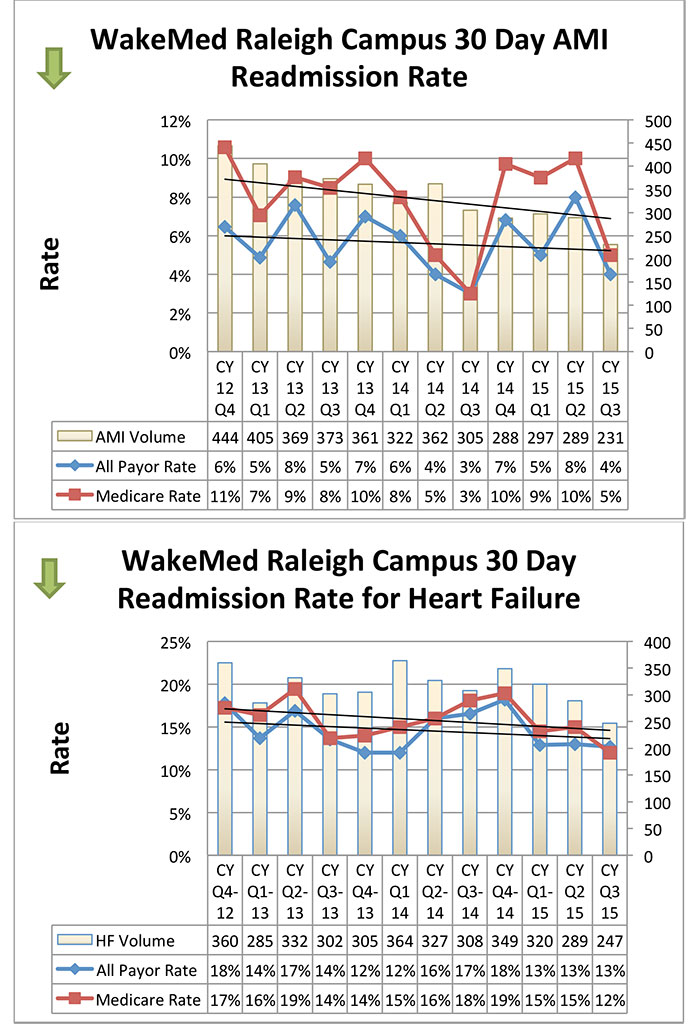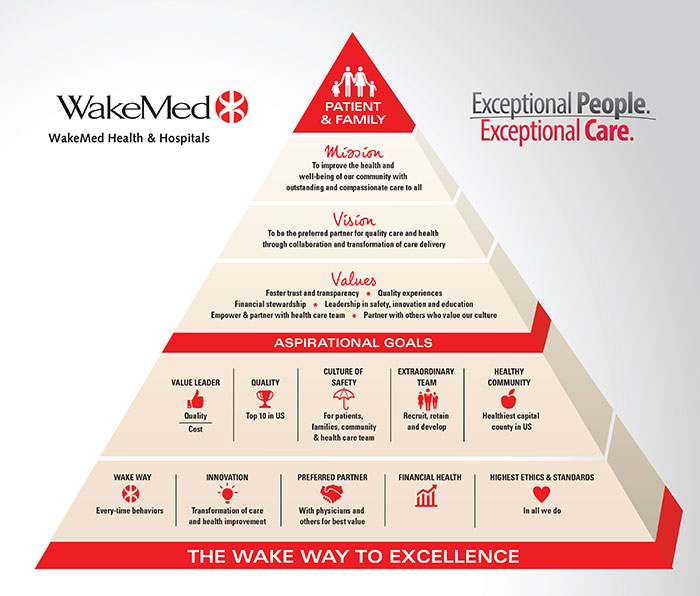WakeMed Health and Hospitals: A Readmissions Success Story
Partners in Innovation | Many hospitals struggle with the increased penalties for excessive readmissions for heart attack and heart failure (HF). Nearly one in five Medicare patients hospitalized with these conditions are readmitted within 30 days of discharge, often for diseases seemingly unrelated to their original diagnosis. ACC’s Patient Navigator Program, which helps hospitals establish navigator teams charged with coordinating care for patients diagnosed with acute coronary syndrome, including heart attack and HF, is helping places like WakeMed Health & Hospitals navigate this challenging environment and better control their readmissions.
The WakeMed Health & Hospitals campuses in Raleigh and Cary, NC, have faced some of the highest readmission penalties in the past. Despite an existing process aimed at reducing readmissions, which included a 24/7 operating cath lab, Code STEMI process, a strong outpatient HF program, cardiovascular education and cardiac rehabilitation referral, WakeMed still incurred a penalty for excessive acute myocardial infarction (AMI) 30-day readmissions.
According to West Paul, MD, PhD, WakeMed vice president of Quality and Patient Safety, readmissions can be related to issues ranging from the stresses of the initial hospitalization, to patient fragility at time of discharge, a lack of understanding of discharge instructions, and the inability to carry out discharge instructions. Care coordination throughout the continuum from hospital admission to recovery at home was a critical piece missing from the WakeMed process.
Over the past year, WakeMed has made concerted efforts to minimize the issues related to readmissions through participation in programs like ACC’s Patient Navigator Program – and has seen results! The Raleigh campus will not face a penalty in 2016, and WakeMed Cary will only see a 0.34 percent reduction in Medicare payments.
“Once the hospital implemented the Patient Navigator Program’s recommendation for multidisciplinary teams to be involved in improving care transitions, this gap in care was reduced,” says Paul. “Our Navigator care teams help minimize transition issues and provide personalized support to patients during their hospital stay and in the weeks following their discharge when they are most vulnerable.”
In addition to the development of Navigator teams, site visits by ACC’s Patient Navigator Program representative were also crucial to the process. During these visits, WakeMed’s Navigator teams were able to review the metrics used to evaluate performance improvement initiatives and ensure priorities were aligned with the overall organizational strategic plan. The hospital also received feedback on opportunities to share work occurring at other pilot sites. Based on this review and feedback, WakeMed was able to identify its target population and implement a patient-centered improvement plan focused on effective care transition.
WakeMed leaders say the focus on patients and families and using the synergy of the individuals, teams and resources within the organization, colleagues outside of the organization and partnerships with professional organizations are all reasons why the Patient Navigator Program works. They note that use of Centers for Medicare and Medicaid Services and NCDR data specific to WakeMed helped to drive change and identify risks to their hospital populations.
Over the past year, the Patient Navigator Program has allowed for an active partnership between WakeMed and the ACC in accomplishing a program for patients that not only exceeds expectations, but can be used as a model by other navigator programs at other sites, notes Betsy Gaskins-McClaine, RN, executive champion of the Patient Navigator Program.
“The greatest opportunity of this program is the collaborative partnership journey with our internal team, with the ACC and with the network of pilot hospitals to innovate the heart patient and family journey to better health,” she adds.
|
Clinical Topics: Acute Coronary Syndromes, Heart Failure and Cardiomyopathies, Acute Heart Failure
Keywords: Cardiology Magazine, ACC Publications, Acute Coronary Syndrome, Centers for Medicare and Medicaid Services, U.S., Heart Failure, Hospitalization, Length of Stay, Medicaid, Medicare, Myocardial Infarction, Outpatients, Patient Care Team, Patient Discharge, Patient Navigation, Patient Readmission, Patient Safety, Patient Transfer, Physician Executives, Quality of Life
< Back to Listings


